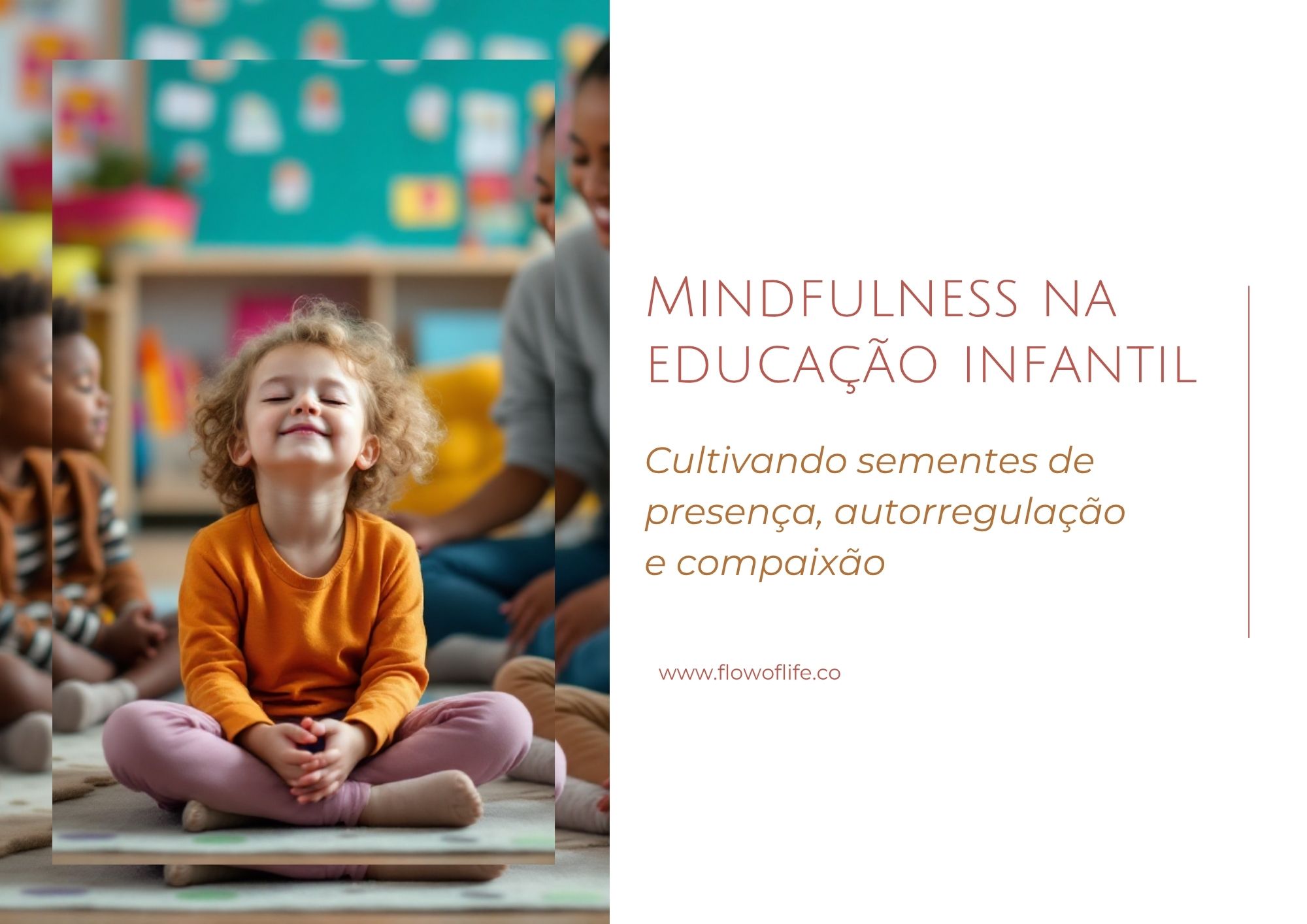Early childhood education is a sensitive stage, where learning takes place through direct experience, play, emotions and relationships. In this fertile field, the introduction of mindfulness represents a practice that goes far beyond attention: it is a way of nurturing self-awareness, empathy and connection with the present from the earliest years of life.
Mindfulness as an integrative pedagogical practice
Traditionally, teaching in schools has valued cognitive aspects such as memorization, language and logical reasoning. However, there is increasing recognition of the importance of socio-emotional skills such as self-regulation, empathy and frustration tolerance for a child's all-round development. And this is where mindfulness comes in as a potential solution.
The practice of mindfulness in childhood is an integrative pedagogical strategy. It unites body, mind and heart in the educational process. And the most beautiful thing is that it can be done with lightness, playfulness and poetry in the beautiful rhythm of childhood.
The effects of mindfulness on children: what the studies say
Scientific research in education and neurodevelopment shows that mindfulness applied in childhood can bring the following benefits:
Improved attention and focus: Regular practice helps strengthen neural networks responsible for concentration and controlling impulsivity (Napoli et al., 2005).
Emotional regulation: Children begin to perceive their emotions more clearly and find more constructive ways of expressing them (Zelazo & Lyons, 2012).
Reduction of aggressive and reactive behavior: By recognizing emotions such as anger or frustration, children learn to respond instead of reacting automatically.
Increased empathy and compassion: Studies show that children who practice mindfulness develop a greater ability to put themselves in the other person's shoes (Schonert-Reichl et al., 2015).
Improvement in the school environment as a whole: Less conflict, more cooperation, more listening between colleagues and educators.
How to adapt mindfulness for children
The secret to making mindfulness work with children is to bring the practice into their universe: body in motion, active imagination, the five senses, stimulation of emotions in constant discovery.
Playful breathing practices
Dragon breath (blowing like a dragon expelling fire: strong and long).
Smell the flower and blow out the candle (inhale by smelling, exhale by blowing).
Balloon that inflates and deflates (hands or stuffed animal on the belly to feel the movement of breathing).
Mindfulness in the arts
Finger paintings focused on sensations (cold paint, paper texture, etc.).
Drawing emotions: "How would you draw calm? And anger?"
Creating mandalas with natural elements.
Attention to the senses and nature
Conscious walks in the garden or woods: listening to the sounds, smelling the smells, sensing the wind, seeing different shapes.
Sound hunt: close your eyes and list everything you hear.
Sensory exploration with fruit, leaves, seeds, fabrics, etc.
Mindfulness in relationships
Active listening games: one speaks and the other just listens, then exchanges.
Gratitude wheels or "conscious praise".
Storytelling with pauses for silence and breathing for integration.
Open road to a new education
Childhood is the time to plant seeds. These simple mindfulness practices teach emotional intelligence and that being present is, in itself, a revolutionary act. When a child learns to breathe before reacting, to perceive their own body, to listen to others with an open heart - they are learning to live!
Bringing mindfulness to early childhood education is not just a pedagogical technique. It is an ethical, loving and visionary choice for an education that forms human beings who are more aware, compassionate and connected to life in all its forms.
Mindfulness as a training ground for a culture of peace
For mindfulness to really flourish in early childhood education, it's important that it's not just another isolated "activity", but part of a wider culture: a school and home that teaches conscious breathing, encourages listening, respects children's rhythms, values silence as much as speech, and is open to genuine presence.
And that starts with adults. Parents and educators who practice mindfulness - even for five minutes a day - become more centered, patient and emotionally available. The transformation happens from the inside out, and the children feel it. More than teaching mindfulness, mindfulness needs to be embodied.
So if you're an educator at home or at work, practice being present and being a living role model for the future generation! Care about those you love and learn at one of Brazil's pioneering schools! Flow of Life, the School of Mindfulness, offers an 8-week program that follows the international mindfulness protocol.
To find out more, click here.




